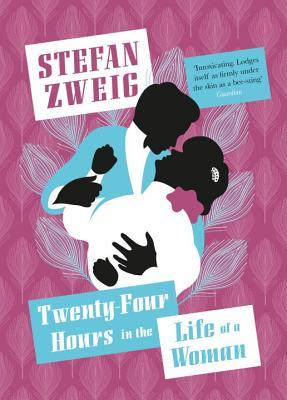Monaco is a tiny principality at the Riviera, a modern city state attracting the rich and the glamorous as well as social climbers and tourists who just want to taste high life. Surrounded by French territory, the enclave of the Grimaldi family is an expensive place to live in, but well-to-do people always had the habit of spending money lavishly – not least in the casinos of Monte Carlo. Since 1856 the country has been a gamblers’ paradise which easily turns into a hell for those who become addicted and lose more than they can afford. Such doomed characters have also found their way into literature. One of them is a young Polish-Austrian aristocrat whose presence at the roulette table accounts for special Twenty-Four Hours in the Life of a Woman which Stefan Zweig tells in his novella.
Stefan Zweig was born in Vienna, Austria-Hungary, today Austria, in November 1881. Already during his studies of German language and literature he began to travel about and to write. First poems were published in 1901, first novellas followed in 1904 and a first biography (that of Émile Verhaeren) in 1910. The experience of World War I and the encounter with Romain Rolland transformed him into a fervent pacifist. In 1919 he moved to Salzburg, Austria, where he lived until 1934 when he wasn’t travelling. Three collections of biographical essays – Three Masters: Balzac, Dickens, Dostoeffsky (1920), The Struggle with the Daemon: Hölderlin, Kleist, Nietsche (1925), Casanova, Stendhal, Tolstoy: Adepts in Self-Portraiture (1928) –, the historical miniatures titled Decisive Moments in History (Sternstunden der Menschheit: 1927), the biographies of Romain Rolland (1921), Joseph Fouché (1929) and Marie Antoinette (1931), several novellas – among them the collections Amok (1922) and Confusion (Verwirrung der Gefühle: 1926) including Twenty-Four Hours in the Life of a Woman (Vierundzwanzig Stunden aus dem Leben einer Frau) – as well as some plays came out making Stefan Zweig a bestselling author. In 1934, when he couldn’t bear the anti-Semitic atmosphere any longer, Stefan Zweig left Austria and became a writer in exile. First he lived in England where he wrote the biographies of Mary Stuart (Maria Stuart: 1935) and Magellan (1938) along with his most famous novel Beware of Pity (Ungeduld des Herzens: 1939). In 1941 he moved to Brazil where he lost all hope for an end of the war and a return to his country and culture of origin. The prolific writer killed himself in Petrópolis, Brazil, in February 1942. His novella Chess (Schachnovelle) and the autobiography The World of Yesterday (Die Welt von Gestern) finished in Brazil were both published posthumously in 1942 and 1944 respectively.
Twenty-Four Hours in the Life of a Woman is a novella set among members of the European high society passing their holidays at the Riviera. It’s about ten years before the beginning of the Great War, in 1904, when the wife of one of the hotel guests and mother of two teenage girls runs away with a young French man whom she got to know only a couple of hours earlier. The following day the guests discuss her scandalous behaviour at table and the first-person narrator takes a strong stand in favour of the young woman. Some days later Mrs. C., a distinguished Englishwoman of sixty-seven who has been of the party, asks the young narrator to come to her room because she feels that she can tell him an embarrassing episode of her life without being condemned and because she hopes that this confession of a sort will ease her conscience. He listens to her story which took place in Monte Carlo sometime around 1880. She had been a widow for two years then and killed her time observing the hands of the gamblers at the roulette table in the casino as her husband had taught her. One night the eloquent hands of a young man scarcely older than her own two sons attracted her attention and she couldn’t let go of them anymore. She didn’t know then that the gambler they belonged to was a Polish-Austrian aristocrat, nor could she imagine that the encounter would put her life upside-down for twenty-four hours and make her jeopardise her good reputation in order to save him from himself. She couldn't help plunging into the adventure, but as it turned out it isn't as easy to reform a gambler as she had thought.
The novella Twenty-Four Hours in the Life of a Woman is written in the typical style of its time of origin in the late 1920s. In German the diction of Stefan Zweig is characteristic of the Interwar Period and sounds slightly antiquated today, but the writer definitely succeeds in drawing the reader into his story with much ease as well as skill. To my regret the title-giving narration of Mrs. C. making up the greater part of the novella feels a bit lifeless at times which mirrors, however, the expected stiff and repressed character of an Englishwoman born and raised in the early Victorian period. Personally, I’d also have appreciated a shorter introduction leading to the main plot dealing with those important twenty-four hours which were so close to changing the whole course of the protagonist's life.
All in all I enjoyed reading this piece of Austrian literature very much although Twenty-Four Hours in the Life of a Woman may not be the best of Stefan Zweig’s works. Usually, the novella is part of a collection, but a single edition of it has just come out in German… and for the first time as it seems. In English the stand-alone novella has been available for years and I hope that my review will have inspired some of you to read it. It’s definitely worth the time!


